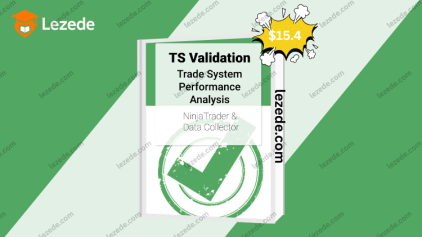Free Download Extreme Events: Robust Portfolio Construction in the Presence of Fat Tails By Malcolm Kemp
Check content proof, now:
DESCRIPTION
Accounting for extreme market events when building asset or liability portfolios is an essential skill for financial professionals. Such events are not anomalies—they are part of how markets function. In Extreme Events: Robust Portfolio Construction in the Presence of Fat Tails, noted authority Malcolm Kemp guides readers through analyzing market data to detect fat-tailed patterns, applying expert judgment to interpret this behavior, and adapting portfolio construction methods to reduce vulnerability—or even capitalize—on these rare but powerful occurrences.
This is the only work that unites a thorough overview of modern risk budgeting and portfolio design techniques with the precise adjustments necessary to address extreme market behavior. Kemp explains step-by-step what fat-tailed distributions are, why they occur, how to evaluate them across aggregate markets, sectors, or specific instruments, and how to use these insights in portfolio strategy.
The text also offers a clear, methodical presentation of conventional portfolio construction methods for scenarios without fat tails, then shows how to enhance these models to better reflect real-world market characteristics.
Throughout, Kemp emphasizes the critical role of practitioner insight, noting that even the most data-driven approaches ultimately rest on assumptions about market behavior.
Key features include:
-
Core principles and tools for identifying and evaluating extreme events
-
In-depth coverage of mean–variance investing, Bayesian methods, market-consistent approaches, and risk budgeting, with applications to manager and instrument selection
-
Step-by-step adaptations of traditional portfolio models to account for fat-tailed risk
-
The latest advancements in stress testing and backtesting techniques
-
Practical guidance on common implementation challenges—and how to resolve them
Praise for the book:
“Understanding how to model and analyse the risk of extreme events is a crucial part of the risk management process. This book provides a set of techniques that allow practitioners to do this comprehensively.”
—Paul Sweeting, Professor of Actuarial Science, University of Kent
“How can the likeliness of crises affect the construction of portfolios? This question is highly topical in times where we still have to digest the last financial collapse. Malcolm Kemp gives the answer. His book is highly recommended to experts as well as to students in the financial field.”
—Christoph Krischanitz, President, Actuarial Association of Austria; Chairman, WG “Market Consistency,” Groupe Consultatif
ABOUT THE AUTHOR
Malcolm Kemp (London, UK) is the Founder and Managing Director of Nematrian Ltd, a consultancy serving the quantitative finance and actuarial sectors. Formerly Director and Head of the Quantitative Research Team at Threadneedle Asset Management, he oversaw the derivatives desk and managed portfolio risk measurement activities. An expert in derivatives, performance measurement, risk assessment, liability-driven investment, and advanced quantitative techniques, Kemp previously worked as a partner at Bacon & Woodrow in investment consultancy. He holds a first-class degree in Mathematics from Cambridge University, is a Fellow of the Institute of Actuaries, and is a frequent speaker at industry events such as Risk Europe and GARP conferences.
TABLE OF CONTENTS
Preface.
Acknowledgements.
Abbreviations.
Notation.
1 Introduction.
1.1 Extreme events.
1.2 The portfolio construction problem.
1.3 Coping with really extreme events.
1.4 Risk budgeting.
1.5 Elements designed to maximise benefit to readers.
1.6 Book structure.
2 Fat Tails – In Single (i.e., Univariate) Return Series.
2.1 Introduction.
2.2 A fat tail relative to what?
2.3 Empirical examples of fat-tailed behaviour in return series.
2.4 Characterising fat-tailed distributions by their moments.
2.5 What causes fat tails?
2.6 Lack of diversification.
2.7 A time-varying world.
2.8 Stable distributions.
2.9 Extreme value theory (EVT).
2.10 Parsimony.
2.11 Combining different possible source mechanisms.
2.12 The practitioner perspective.
2.13 Implementation challenges.
3 Fat Tails – In Joint (i.e., Multivariate) Return Series.
3.1 Introduction.
3.2 Visualisation of fat tails in multiple return series.
3.3 Copulas and marginals – Sklar’s theorem.
3.4 Example analytical copulas.
3.5 Empirical estimation of fat tails in joint return series.
3.6 Causal dependency models.
3.7 The practitioner perspective.
3.8 Implementation challenges.
4 Identifying Factors That Significantly Influence Markets.
4.1 Introduction.
4.2 Portfolio risk models.
4.3 Signal extraction and principal components analysis.
4.4 Independent components analysis.
4.5 Blending together principal components analysis and independent components analysis.
4.6 The potential importance of selection effects.
4.7 Market dynamics.
4.8 Distributional mixtures.
4.9 The practitioner perspective.
4.10 Implementation challenges.
5 Traditional Portfolio Construction Techniques.
5.1 Introduction.
5.2 Quantitative versus qualitative approaches?
5.3 Risk-return optimisation.
5.4 More general features of mean-variance optimisation.
5.5 Manager selection.
5.6 Dynamic optimisation.
5.7 Portfolio construction in the presence of transaction costs.
5.8 Risk budgeting.
5.9 Backtesting portfolio construction techniques.
5.10 Reverse optimisation and implied view analysis.
5.11 Portfolio optimisation with options.
5.12 The practitioner perspective.
5.13 Implementation challenges.
6 Robust Mean-Variance Portfolio Construction.
6.1 Introduction.
6.2 Sensitivity to the input assumptions.
6.3 Certainty equivalence, credibility weighting and Bayesian statistics.
6.4 Traditional robust portfolio construction approaches.
6.5 Shrinkage.
6.6 Bayesian approaches applied to position sizes.
6.7 The ‘universality’ of Bayesian approaches.
6.8 Market consistent portfolio construction.
6.9 Resampled mean-variance portfolio optimisation.
6.10 The practitioner perspective.
6.11 Implementation challenges.
7 Regime Switching and Time-Varying Risk and Return Parameters.
7.1 Introduction.
7.2 Regime switching.
7.3 Investor utilities.
7.4 Optimal portfolio allocations for regime switching models.
7.5 Links with derivative pricing theory.
7.6 Transaction costs.
7.7 Incorporating more complex autoregressive behaviour.
7.8 Incorporating more intrinsically fat-tailed behaviour.
7.9 More heuristic ways of handling fat tails.
7.10 The practitioner perspective.
7.11 Implementation challenges.
8 Stress Testing.
8.1 Introduction.
8.2 Limitations of current stress testing methodologies.
8.3 Traditional stress testing approaches.
8.4 Reverse stress testing.
8.5 Taking due account of stress tests in portfolio construction.
8.6 Designing stress tests statistically.
8.7 The practitioner perspective.
8.8 Implementation challenges.
9 Really Extreme Events.
9.1 Introduction.
9.2 Thinking outside the box.
9.3 Portfolio purpose.
9.4 Uncertainty as a fact of life.
9.5 Market implied data.
9.6 The importance of good governance and operational management.
9.7 The practitioner perspective.
9.8 Implementation challenges.
10 The Final Word.
10.1 Conclusions.
10.2 Portfolio construction principles in the presence of fat tails.
Appendix: Exercises.
A.1 Introduction.
A.2 Fat tails – In single (i.e., univariate) return series.
A.3 Fat tails – In joint (i.e., multivariate) return series.
A.4 Identifying factors that significantly influence markets.
A.5 Traditional portfolio construction techniques.
A.6 Robust mean-variance portfolio construction.
A.7 Regime switching and time-varying risk and return parameters.
A.8 Stress testing.
A.9 Really extreme events.
References.
Index.
SERIES
The Wiley Finance Series












